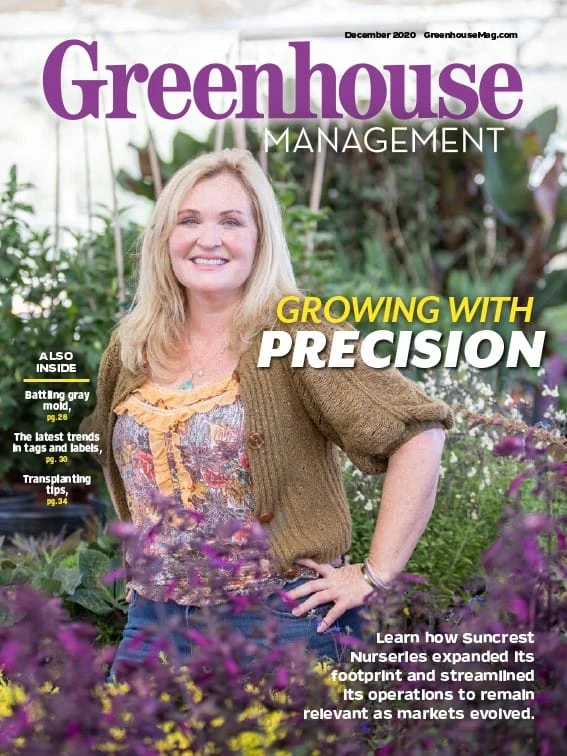

A workstation is an area where an employee does a series of repetitive tasks; for example, transplanting, potting, patching, or preparing cuttings. The layout of this area can have a large influence on the efficiency of the work that is accomplished.
Basic principles of workstation design and layout have been developed based on time and motion studies, and these have been applied to many industrial operations and tasks. These same principles can be used to improve many of the tasks associated with growing plants and often results in a 20-30% reduction in time.
Design considerations
Include these in any workstation design:
- Worktable
- Incoming materials (prefilled containers, transplants, tags, cuttings to be graded, etc.)
- Location of transplanted container (cart, conveyor)
- Space for the worker
- Container for waste material
- Tools
A drawing should be made on graph paper to scale to develop the best layout. It should include the location of the worker, materials and tools.
The following basic principles should be followed:
Workstation height
The best table height is elbow height. Adjustment should be provided for different-sized workers. It is best to provide for both standing and sitting positions as greater efficiency is achieved when workers change positions.
Elbow height should be measured in the standing position. Height adjustment in the chair or stool can bring the worker up to the standing height level. Comfortable chairs with back support and footrests will create less fatigue.

Hand and arm motion
Where possible, both hands should always operate as mirror images and both be working. Holding something in one hand while the other hand is performing a task is not very productive. If reaching for plants or other things, the distance should be the same for both hands.
Continuous or curved motions are the most natural and productive. Start-and-stop motions require more energy and time. Try to avoid lifting and instead, slide the flats.
The reach from the normal arm rest position should be limited to a 24-inch radius to the side and front for women and a 27-inch radius for men. The main assembly area is best positioned within 16 inches to 18 inches of the resting elbow position.
Workspace
A space of 3 feet by 3 feet is normal for the worker, unless a wider work area is needed. Space to the rear should be left for movement of carts.
Adequate lighting over the work area will increase efficiency and reduce eye strain. It should be located above the workstation so as not to create shadows. A level of 40- to 60 foot-candles is necessary. Glare from lights and windows should be avoided.
Location of materials
Locate materials as close to the work area as possible. The farther you have to reach for something, the more time it takes. Walking 10 feet to get, pick up, or set down a flat will add two to three cents to the production cost of the flat.
Tipping the flat toward the transplanter can reduce the distance by as much as 10 inches. Plugs should be dislodged to effect easier removal. Locating a dibble board in a permanent holder so the worker does not have to look to retrieve it is also advised.
Prefilled containers from the flat or pot filler are best conveyed to the work area. A belt conveyor with an accumulating station works best. Gravity should be used wherever possible.
A conveyor located to the back of the workstation is best for sending a transplanted container on its way to the greenhouse. The flat or pot is just pushed onto the conveyor. Alternate locations are underneath the workstation bench or behind the worker. This involves moving or turning which takes more time. If carts are used, they should be located as close as possible to each worker.
Inexpensive fixtures or brackets can be installed to hold materials in position while they are being worked on. This frees up one hand that would normally be required for support.
The bottome line? Putting the above principles into practice in your operation can help reduce worker fatigue and increase production output throughout your greenhouse.

Explore the December 2020 Issue
Check out more from this issue and find your next story to read.
Latest from Greenhouse Management
- Anthura acquires Bromelia assets from Corn. Bak in Netherlands
- Top 10 stories for National Poinsettia Day
- Langendoen Mechanical hosts open house to showcase new greenhouse build
- Conor Foy joins EHR's national sales team
- Pantone announces its 2026 Color of the Year
- Syngenta granted federal registration for Trefinti nematicide/fungicide in ornamental market
- A legacy of influence
- HILA 2025 video highlights: John Gaydos of Proven Winners





